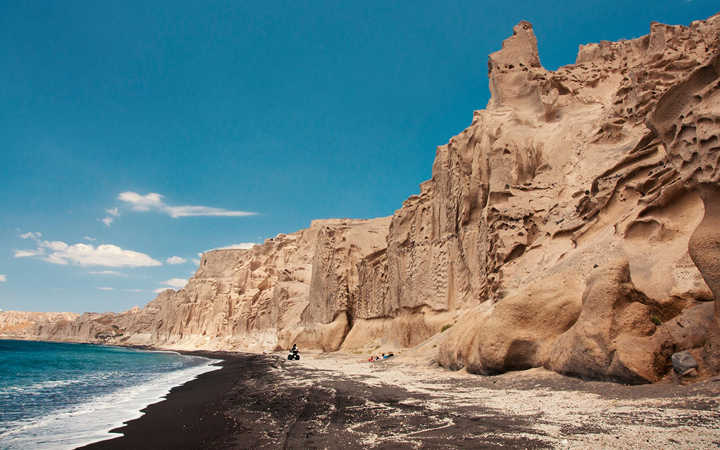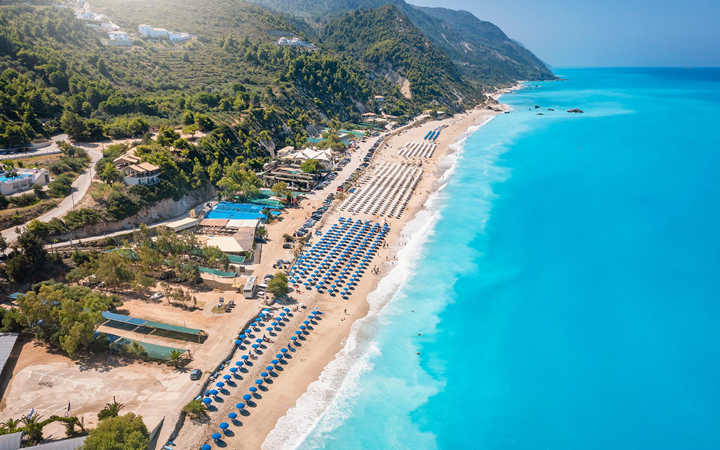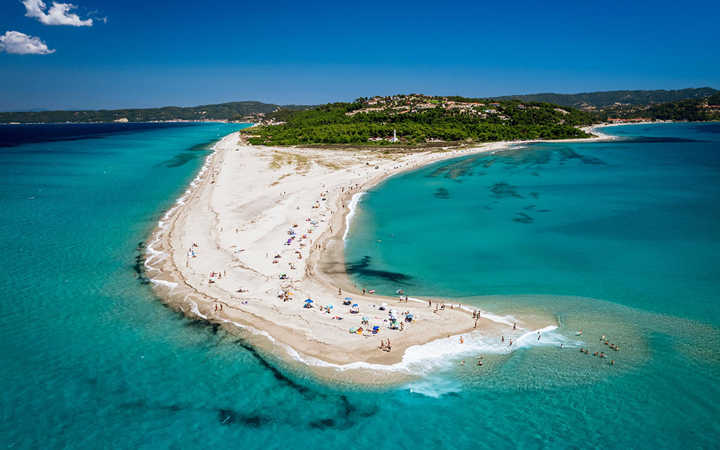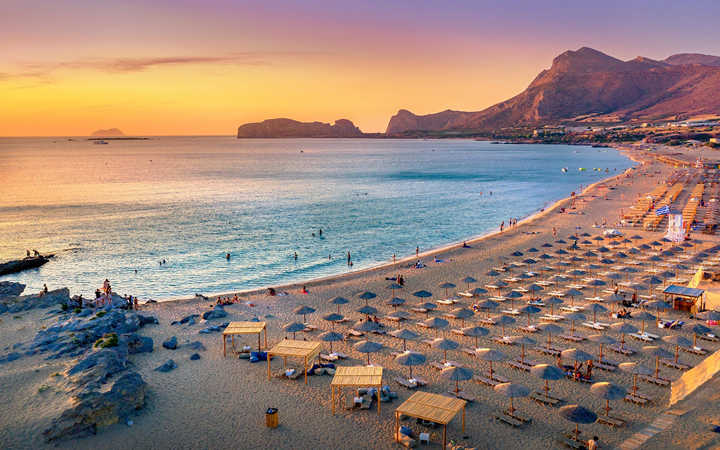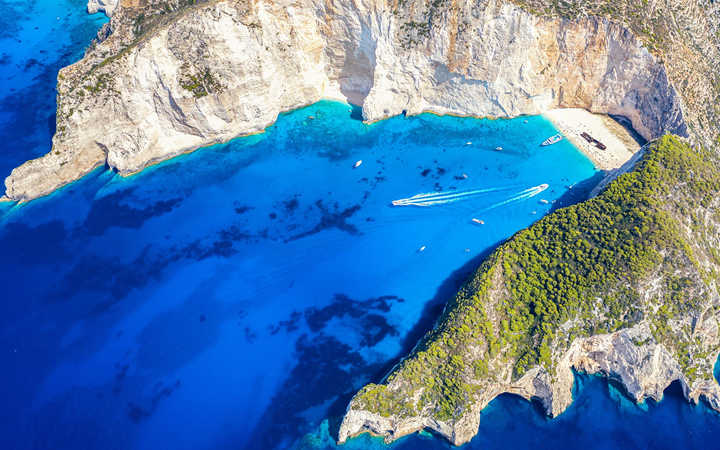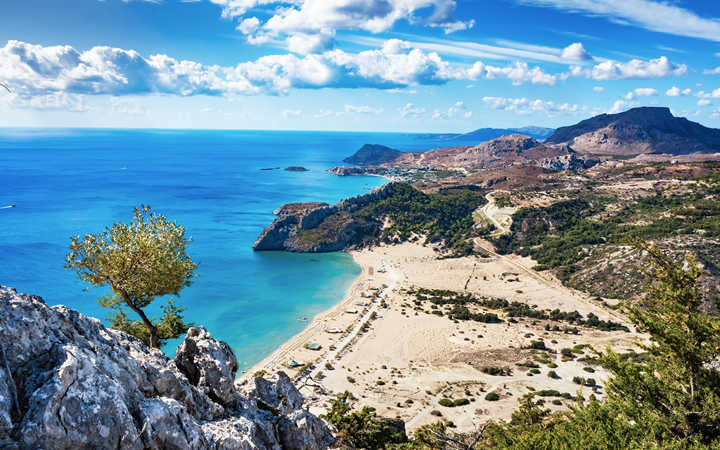Wherever you are in the world, you may have gone swimming at a beach over which a beautiful flag presided. The white circle with three waves in its center set against a cerulean blue background represents exceptional water quality and is a guarantor of a safe swimming experience.
The Blue Flag is the designation of a programme founded in 1987 by the International Foundation for Environmental Education. The main prerequisite for Blue Flag is the exceptional quality of the waters. There are 33 other requirements for a beach to qualify, such as cleanliness, organization, swimmer safety, and the natural beauty of the surrounding area. The flag designation is awarded on a yearly basis, and participation in the programme is voluntary. Most Blue Flag beaches are in Europe. The US began participating in 2023 and has two Blue Flag beaches.
As of 2023, 4,212 beaches have this designation. As far as countries with the highest total Blue Flag beaches, Greece is ranked 2nd in the world with 617 (Spain, with 729, is ranked #1.).
Regionally, you’ll find the greatest number of Blue Flag beaches in Halkidiki, the three-fingered peninsula in Northern Greece, which boasts 94. Halkidiki is just a hop, skip and a jump from Thessaloniki’s Makedonia International Airport, making it exceptionally convenient to reach. Bus service from the airport to Halkidiki is reliable, frequent, and cheap. If you’re staying at one of the dozens of resorts in Halkidiki, you’ll likely be the beneficiary of a free shuttle bus pickup right at the airport, and then it’s a couple hours tops to your destination.
Halkidiki doesn’t sound as romantic as a Greek island, but in all other respects the region is just as beautiful, and in many cases, more beautiful than an island. For ease of access you can’t beat Halkidiki. You’ll save the better part of a day’s travel there and back once you factor in taking the Metro from Athens’ Eleftherios Venezelos International airport to Piraeus, then taking a ferry of several hours to reach the island of your choice.
The place with the second largest amount of Blue Flag beaches is the island of Rhodes, the historic home of the classical-era Colossus, in the far southeast Aegean. Rhodes has 57 Blue Flag beaches.
The 3rd, 4th, and 5th places for Blue Flag beaches in Greece are all in Crete: 48 in Lasithi, the easternmost regional unit of the island with its capital at Agios Nikolaos, 38 in Chania, towards the western end of the island, and 38 in Iraklio, at about the center point of the island. In addition, there are 18 Blue Flag beaches in Attica which is the regional unit whose capital is Athens.
It should be mentioned that whilst Blue Flag beaches in the immediate area of Athens are convenient, because upwards of half the country lives in Attica, you won’t find those exceptionally crystal clear waters here that you find elsewhere in Greece. For all that, their Blue Flag designation assures you that the waters are safe for swimming.
Some Prime Examples
It’s beyond the scope of this blog post to attempt any kind of ranking system of these beaches; there are hundreds, and all have a greater of lesser degree of natural beauty, but a sample of some of the better, and some of the more interesting Blue Flag beaches is pretty manageable:
Vlichada, Santorini
Vlichada Beach in Santorini is fairly secluded, although there is a section with sun beds and umbrellas. This eerie, other-worldly beach has black sand and is backed up by cliffs of packed volcanic ash sculpted into weird configurations by the action of the wind and rain. There is a small resort near the beach, a taverna or two, a beach bar, and a little bit of shopping so you don’t feel like you’re on the moon, even though the landscape might make you think otherwise.
Kathisma Beach, Lefkada
This beach on the west, or Adriatic, coast of the Ionian island of Lefkada has one of the longest strands on the island, fine, white, sugar-like sand, and a backing of cliffs clothed in lush greenery, as well as interesting exposed rock formations which are safe for cliff diving. The water is stunning, clear, and clean enough to gargle. Sometimes the wind whips up fairly big waves, which people seem to like. Kathisma Beach offers beach bars, restaurants, sun beds and umbrellas, and even exotic sports like paragliding from the nearby cliffs. It’s northern extremity features a cave that you can swim into. The far south end of the beach is clothing optional.
Possidi Beach, Halkidiki
About halfway down the west coast of Kassandra, the first of the three fingers of the Halkidiki peninsula, Possidi is unique in that it terminates in a 500m long, tapering sand peninsula of its own, which stretches south, in the opposite direction that the camera is facing. Has a charming, whitewashed lighthouse dating from 1864. It was originally at the water’s edge, but the sand deposits which created Possidi Beach created distance from the actual water. There are ruins of an ancient temple to Poseidon, god of the sea, nearby, and about 1km to the west of the lighthouse is a chapel dedicated to the Virgin Mary dating from 1619. Considered by some the best beach with the best beach bar in Halkidiki. There’s plenty of space between umbrellas and sunbeds, unlike many other, much more crowded beaches.
More about Halkidiki peninsula
Myrtos Beach, Kefalonia
This Tripadvisor’s Travelers’ Choice award-winning beach on the north shore of Ionian Island Kefalonia is backed by soaring marble cliffs has changing rooms, toilets, a beach bar, and some sun beds and umbrellas which tend to be all rented by late morning. Beach is comprised of small, weathered pebbles. Lonely planet and Cosmopolitan magazine both rate it amongst the best beaches in the world. Best of all are the variegated shades of aquamarine of the crystal clear waters.
Falassarna Beach, Crete
Consistently rated one of the top ten beaches of Europe, Falassarna, western Crete, is also considered by many to be the best beach on the island. With famously pink sands at the water’s edge, the beach is backed by exotic topography and a classic village of whitewashed cottages. It’s also the longest beach in Crete, with plenty of beach bars, tavernas, and water sports. There are hotels and apartments for rent nearby as well. Still and all, the environment is exquisitely beautiful and unsullied by over-building. At the beach’s northern end are the ruins of the ancient Greco-Roman port of Falassarna, built at a small lagoon and the only natural port in western Crete, which has now, due to earthquake activity, been raised 9m above sea level.
Shipwreck Beach, Zakynthos
There’s a reason Shipwreck Beach in Zakynthos is one of the most photographed beaches in the world. The exceptional coloring of the waters, in dramatic contrast with the soaring limestone cliffs, and the focal point of a rusting old hulk of the MV Panagiotis, which ran aground there in a storm in 1980, completing a stunning visual tableau and provoking millions of shutter clicks from visitors the world over. To add to the romanticism, the ship’s captain was carrying contraband cigarettes from Turkey in the ship’s hold. The beach was closed to swimmers for the entirety of 2023 after a September, 2022 earthquake dislodged part of the cliff face, but should re-open again soon. The beach also has no amenities, but even if 2023, closed to visitors, it’s still worth the trip to add your own to those millions of shutter clicks.
Tsambika Beach, Rhodes
Another Tripadvisor Travelers’ Choice award winner, Tsambika Beach in Rhodes is noted for is shallow, kids-friendly waters, as well as abundant water sports such as inflatable water parks, jet skiing, and parasailing, and its soft sand. There are even massage therapies on offer. The Tsambika Monastery overlooks the beach, which is noted for its baskets of wax figurines of baby boys and girls newlywed couples traditionally leave their for the Virgin Mary, to whom the monastery is dedicated, can assist them in having families.

